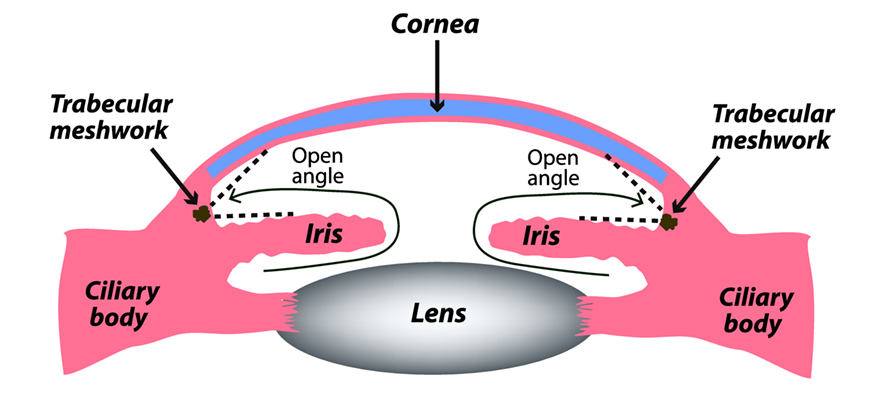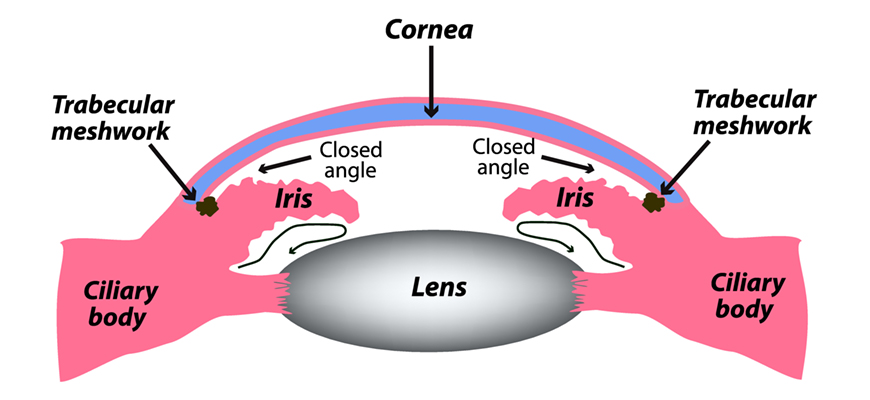Glaucoma
Glaucoma is one of the most common causes of blindness in the United States. This group of eye disorders affects around three million Americans at any given time. Glaucoma may have no warning signs or symptoms. It can cause serious damage to the nerve tissue in the eye, leading to vision loss and even blindness. It affects patients of all ages.
At Focus Eye Group in Thorndale, PA, and Berwyn, PA, we provide compassionate eye care. This includes advanced glaucoma diagnosis and treatments from leading eye care specialists.
Read on to learn more about glaucoma care, how we diagnose and detect glaucoma, and cutting-edge treatments available.
What is glaucoma?
Glaucoma refers to a cluster of eye disorders that affects the optic nerve. The optic nerve is the “messenger” between the eye and the brain. The eye makes aqueous humor continuously, and it exits the eye through the trabecular meshwork. When this fluid doesn’t drain quickly enough, the pressure within the eye rises, and we call this “glaucoma”.
Usually, glaucoma is characterized by fluid blockages and heightened pressure in the eye. This heightened pressure (intraocular pressure) can lead to blindness.
Other forms of glaucoma are caused by eye injuries or infections, blocked blood vessels, or inflammation. The vision loss caused by glaucoma is irreversible. Once glaucoma has caused vision loss, that vision is gone.
This is why it’s so important to get eye care immediately if you are at risk of developing the disorder.
What are the different kinds of glaucoma?
There are several kinds of glaucoma. Each kind of glaucoma presents in a different way. They may need a different approach to treatment as well.
Open-angle glaucoma
Primary open-angle glaucoma is the most common kind of glaucoma. It affects over 95% of glaucoma patients.
Often, this kind of glaucoma is painless and symptom-less. This can be the case for years until vision loss occurs.

Angle-closure glaucoma
Angle-closure glaucoma is often caused by a narrow-angle between the cornea and iris. It is the other main kind of glaucoma.
Acute angle-closure glaucoma refers to sudden-onset high eye pressure. Acute angle-closure glaucoma may lead to vision loss within a day or less. Chronic angle-closure glaucoma occurs across time.

Secondary glaucoma
Unlike angle-closure and open-angle, secondary glaucoma is caused by other medical conditions. This includes conditions like diabetes, hypertension, or trauma. It can also be because of other eye conditions like cataracts.
Secondary glaucoma can also occur as a side effect of certain prescription medications.
Congenital glaucoma
Congenital glaucoma is present at birth. Some children are born with a drainage angle that is too narrow to drain fluid from the eye efficiently.
Low-tension or normal-tension glaucoma
Infrequently, patients with low or normal intraocular pressure may develop glaucoma.
What are the symptoms of glaucoma?
Usually none. There are no clues for the patient that they are developing the commonest variety of glaucoma, open-angle glaucoma. In the more rare case of acute angle-closure glaucoma, patients may develop blurry vision, eye pain, headache, problems with peripheral vision, halos, and severe nausea. These symptoms are especially clear in sudden- onset angle-closure glaucoma.

Who is at risk of developing glaucoma?
While anyone can develop glaucoma, patients who over 40 are especially at risk. The risk increases again after age 60. Besides age, other risk factors for glaucoma include:
- A family history of the disorder
- Race, with African Americans and Hispanics much likelier to develop open-angle glaucoma.
- Other eye conditions like inflammation, eye tumors, retinal detachment, and optic nerve sensitivity.
- Thin corneas.
- High eye pressure.
- Use of certain medications, such as corticosteroids.
- Health conditions, such as diabetes, cardiovascular disease, or high blood pressure.
- Prior eye surgeries or injuries.
- Being highly nearsighted.
How can glaucoma be detected and diagnosed by an eye care specialist?
Your ophthalmologist will routinely test several things in addition to taking a careful personal and family medical history. Intraocular pressures are measured at each visit and if elevated provide an initial suspicion of the disease.
However, truly evaluating a patient’s risk for glaucoma involves much more including the appearance and health of the optic nerve, the assessment of the visual fields, and pachymetry to check corneal thickness. Along with any additional risk factors, your ophthalmologist can put this all together to know your individual situation.
How is glaucoma treated?
The three main treatments for glaucoma include prescription medications, surgery, and laser treatment.
Medications:
Your doctor may prescribe eye drops for glaucoma, which can help your eyes to produce less fluid. By producing less fluid, the drops should also help your eyes drain better as well.
These medications are quite effective, but they may cause side effects. These can include redness, itching, burning, and changes in eye appearance. They may also cause problems with fatigue, breathing, and heart rate.
Surgery:
There are some conventional surgeries for glaucoma, including a trabeculectomy. With a trabeculectomy, a piece of the trabecular meshwork gets removed from your eye.
This helps reduce intraocular pressure levels and lets the eye drain more. Less invasive microsurgeries and shunt insertions may also be possible.
Laser treatment:
Laser treatments are often the first-choice treatment for glaucoma. This is because of their high rates of effectiveness and low risk of side effects.
You should talk to your eye care specialist about which treatment might be right for you.
What laser treatment options are available for glaucoma?
Laser treatment options for glaucoma have a lower risk of side effects and complications. These are the most common kinds of laser treatments for glaucoma:
Laser peripheral iridotomy/iridectomy
In a laser iridotomy, usually for angle-closure glaucoma, a laser makes a small hole in the iris. This allows fluid to drain more efficiently.
Surgeons often choose to perform the procedure on both eyes. This is often the cause even if the patient only has glaucoma in one eye, to prevent it from developing in the future.
Selective laser trabeculoplasty
Selective laser trabeculoplasty targets the trabecular meshwork with a laser to relieve eye pressure. SLT stimulates the body’s immune system to “clean up” the material which obstructs the trabecular meshwork. Selective-laser trabeculoplasty is usually used for patients with open-angle glaucoma.
This procedure is quick, painless, and requires little recovery time. It can reduce the pressure in a patient’s eye by almost a third. You may need a repeat treatment in one to five years for optimal ongoing results.
Can I do anything to prevent glaucoma?
There is no way to guarantee you’ll never develop glaucoma. But a good place to start is leading a healthy lifestyle! This means not smoking, eating lots of fruits and vegetables, and exercising.
Because glaucoma often has no symptoms, the most important thing you can do is have routine eye exams. If you know that glaucoma runs in your family, you should have annual eye exams.
If you do have glaucoma, the key to avoiding further vision loss is early diagnosis and treatment!
Glaucoma care in Thorndale, PA and Berwyn, PA
If you suspect you may have glaucoma or simply want to prevent it, it’s important to get the best eye care possible. Focus Eye Group is home to leading professional ophthalmologists.
Our team of informed glaucoma experts provides quality eye care to patients of all ages. Contact us to schedule an appointment in Thorndale, PA, or Berwyn, PA today!




